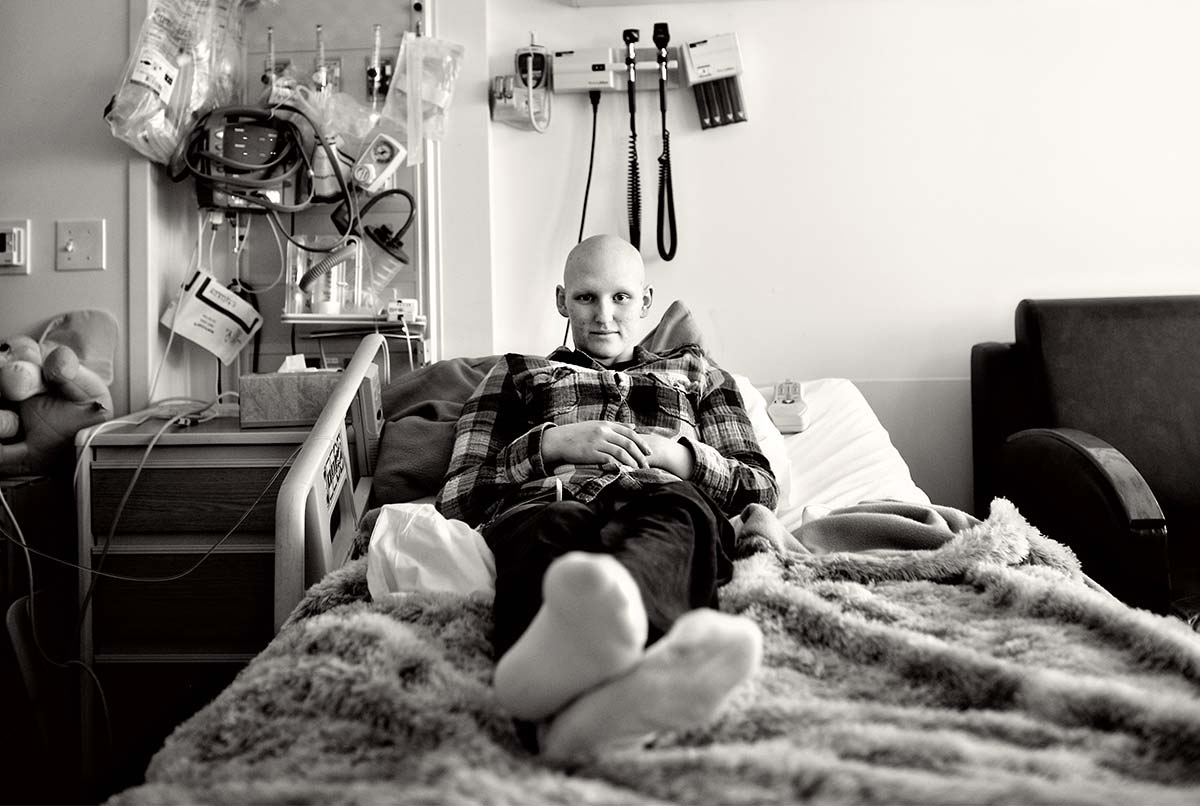Dr. Choi, a St. Baldrick’s Scholar, completed a phase II clinical trial testing a new drug to help kids with leukemia and other childhood cancers, and the results are encouraging. Help fund research like Dr. Choi’s. Get involved.

Kids with leukemia, like 2011 Ambassador Julia, sometimes have to undergo a stem cell transplant as part of their childhood cancer treatment. Graft-versus-host disease is a common complication of transplants.
For some kids with cancer, a stem cell transplant is their only hope for a cure. But stem cell transplants are very risky procedures. About half of all transplant patients will experience acute graft-versus-host disease, or GVHD, an often fatal complication where the transplanted immune cells attack the patient’s body.
GVHD is usually treated with high doses of steroids, explained Sung Won Choi, M.D., M.S., a St. Baldrick’s Scholar at the University of Michigan. “It’s the standard treatment, and it unfortunately hasn’t changed in the last two to three decades,” she said.
But steroids are only effective about 35% of the time, and prolonged use can have debilitating side effects, including bone damage, diabetes, and obesity.
“New, non-steroidal therapies for GVHD are urgently needed,” Dr. Choi said.
And that’s exactly what she and her team are trying to find.
To that end, they completed a phase II clinical trial testing a new drug in for patients showing early signs of graft-versus-host disease after a stem cell transplant.The drug, etanercept, is already FDA approved for children and adults with rheumatoid arthritis. It works by suppressing a protein called tumor necrosis factor alpha, or TNF-A. Everyone’s body produces TNF-A, and you produce more when your immune system is inflamed, which can happen when you get a fever or an infection — or, in this case, GVHD.
The idea was to give etanercept to patients early on to prevent the GVHD to escalating to more harmful levels.
GVHD is graded on a scale of 1 to 4, Dr. Choi explained. Grades 1 and 2 are mostly contained to the skin. Grade 3 involves other organs, and that’s where it gets really dangerous.
“Grades 3 and 4 historically are known to result in life-threatening conditions,” Dr. Choi said. “There’s up to a 90% mortality rate associated with grade 4 GVHD. Our goal is to prevent it from getting to that point.”
Normally, patients are started on high-dose steroids once they reach grade 2. But rather than waiting for the disease to progress to where it’s bad enough to need strong drugs with harmful side effects, patients in Dr. Choi’s study were given etanercept when they started showing signs of early, mild grade 1 GVHD.
The results, Dr. Choi said, were encouraging. Fewer patients progressed to grades 2-4 on etanercept compared to the control group.
Dr. Choi’s study is an exciting step toward better, safer treatments for children with cancer, and she has St. Baldrick’s dedicated volunteers and supporters to thank for it.
“I think that what St. Baldrick’s does on behalf of childhood cancer is so, so important,” Dr. Choi said. “None of this would have been possible without St. Baldrick’s — that’s for sure.”
Help fund lifesaving childhood cancer research like Dr. Choi’s. Donate now.
Read more on the blog:


 SBF
Tweets »
SBF
Tweets »